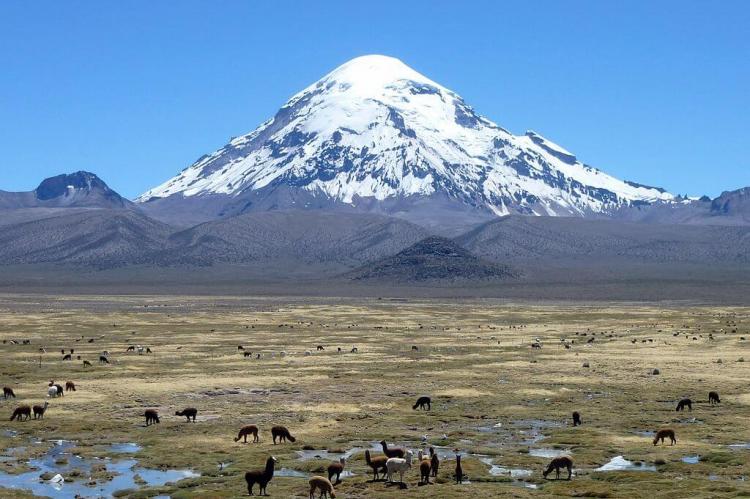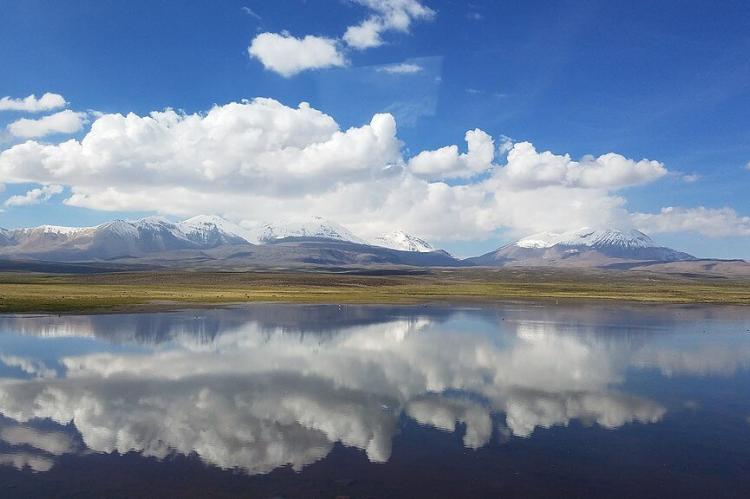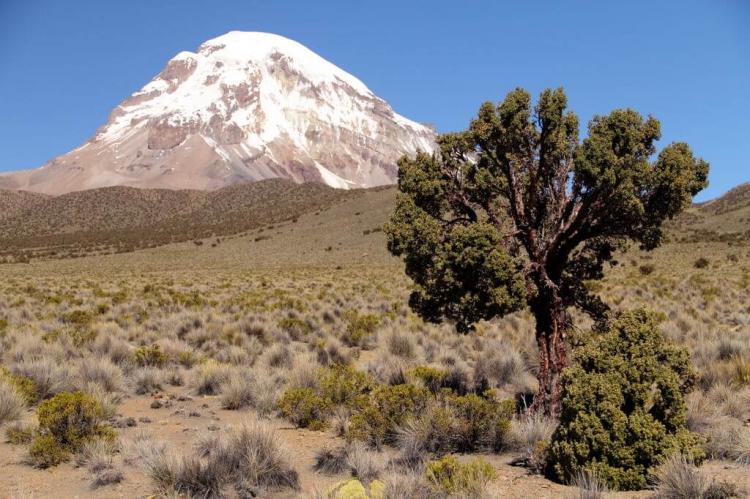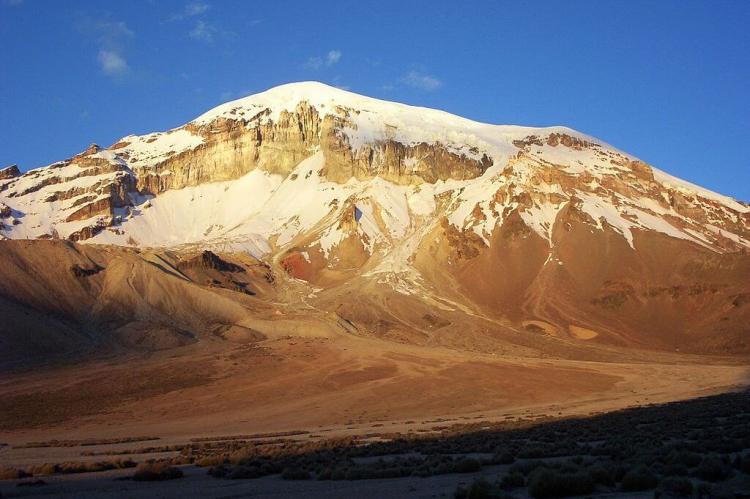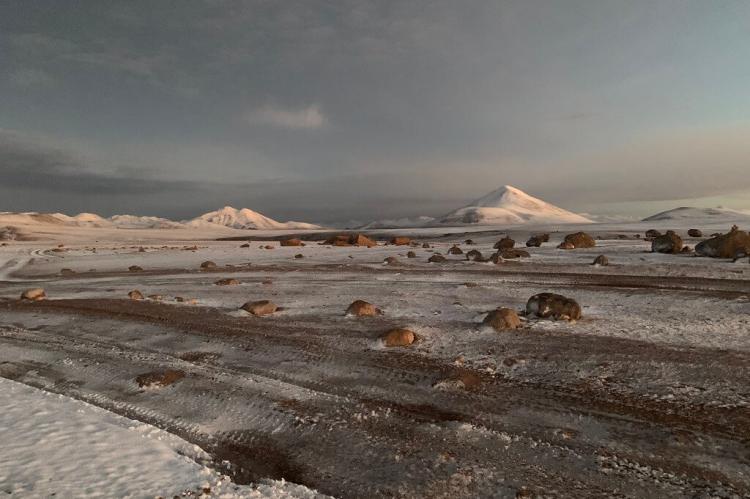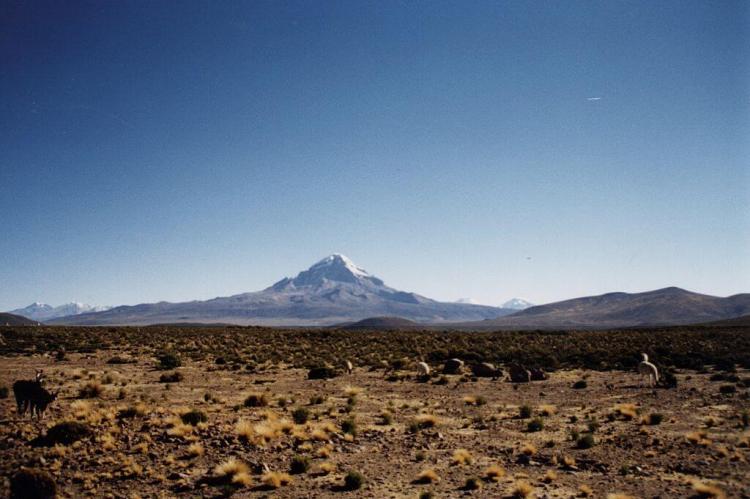Nevado Sajama and Sajama National Park: Bolivia's Alpine Majesty
Nevado Sajama, a majestic extinct stratovolcano, proudly stands as Bolivia's loftiest peak. This towering giant is nestled within the Sajama National Park, a pristine expanse east of the Chilean border. The volcano and its protective sanctuary weave a tale of geological grandeur and indigenous heritage.
Nevado Sajama and Sajama National Park
Bolivia's Alpine Majesty
Nevado Sajama, a majestic extinct stratovolcano, proudly stands as Bolivia's loftiest peak, soaring to 6,542 meters (21,463 feet). This towering giant is nestled within the Sajama National Park, a pristine expanse in the Oruro Department, approximately 20 kilometers (12 miles) east of the Chilean border. The volcano and its protective sanctuary weave a tale of geological grandeur, indigenous heritage, and conservation triumphs.
Nevado Sajama: A Stratovolcanic Sentinel
Nevado Sajama is a composite volcano, its silhouette dominated by a stratovolcano crowned by several lava domes. Its conical shape and extensive glaciation above 5,600 meters (18,400 feet) paint a picture of the geological forces that shaped this region. While the volcano's last eruption remains uncertain, it is believed to date back to the Pleistocene or Holocene epochs.
Nevado Sajama's ascent is a physical and historical journey. Joseph Prem's initial attempt in 1927 laid the groundwork for future climbers. Success came in August 1939 when Prem, alongside Wilfrid Kuehm, conquered the summit via the challenging southeast ridge. Today, an acclimatized team, starting from the village of Sajama, can reach the summit in two or three days, weather permitting.
Sajama National Park: Where Nature and Culture Converge
Sajama National Park, established in 1939, cradles Nevado Sajama within its protective embrace. Spanning 100,200 hectares (247,600 acres), this haven is more than a geological reserve; it's a testament to the enduring connection between the Aymara indigenous people and their ancestral lands. The park's elevation, ranging from 4,200 to 6,542 meters (13,780 to 21,463 feet), encompasses an array of ecosystems.
Beyond its geological allure, Sajama National Park is woven into the fabric of Aymara culture. The park resonates with echoes of ancient traditions and mythologies, shaping the identity of local communities. As a sanctuary for nature and culture, the park is pivotal in preserving Bolivia's rich heritage.
Flora and Fauna: Biodiversity Amidst Altitudes
Sajama National Park unfolds within the Central Andean dry puna ecoregion, revealing a diverse tapestry of flora. At lower elevations, shrubs like Asteraceae and Solanaceae dominate, while frost-tolerant herbs, including Azorella and Asteraceae, prevail above 4,000 meters (13,000 feet). Notably, the park boasts open queñoa (Polylepis tarapacana) forests, considered the world's highest, spanning altitudes between 4,300 and 5,200 meters (14,000 and 17,000 feet).
The park shelters a spectrum of wildlife, including the resilient vicuña, once near extinction due to poaching for their prized wool. Armadillos, viscachas, bears, Andean cats, pumas, condors, flamingos, coots, hummingbirds, rheas, and many other species find refuge in this biodiverse haven.
Conservation Triumph and UNESCO Recognition
Sajama National Park was initially created to safeguard the native Queñoa De Altura (Polylepis tarapacana) woodlands, vital to the region's ecosystem. These efforts curbed the rampant harvesting of queñoa trees, preventing their transformation into charcoal for Bolivian mines.
Sajama National Park's cultural and natural significance earned it a place on the UNESCO World Heritage Tentative List in 2003. This acknowledgment underscores its universal value and the delicate balance between cultural heritage and environmental conservation.
Nevado Sajama and Sajama National Park, entwined in geological splendor and cultural reverence, beckon adventurers and conservationists alike. Bolivia's alpine majesty, etched against the canvas of the Andes, invites exploration and celebration of a landscape where nature and heritage converge in harmonious coexistence.
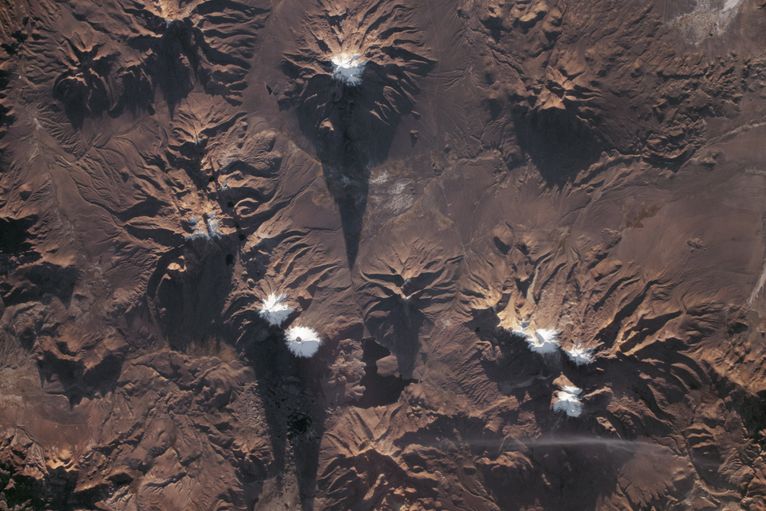
International Space Station (ISS) photograph highlights the Nevado Sajama and Parinacota volcanoes.
